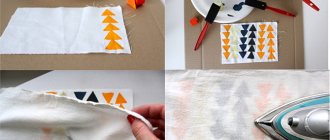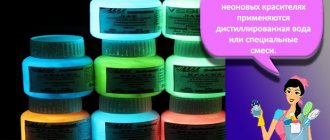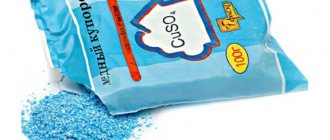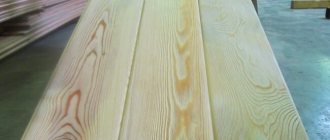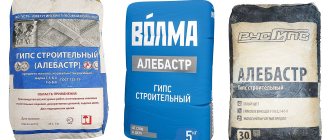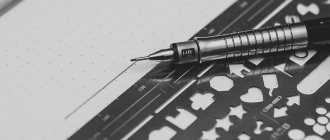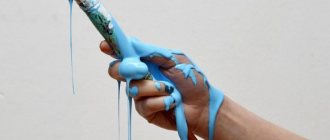Currently, markers for drawing on glass are indispensable assistants for most craftsmen, including artists, glaziers, business people and housewives. The design of the marker is extremely simple:
- Housing (plastic, metal or rubber, some models have a press button and a device to protect the writing unit from drying out).
- Cap.
- A rod impregnated with a special substance.
- The tip is porous with different shapes.
The marker body must be designed in such a way as to prevent paint evaporation.
Wash off traces of marker from glass
With the arrival of spring, every person wants to bring maximum cleanliness to their home, apartment, entrance and work space.
The tradition of subbotniks, the desire to clean up what they simply couldn’t get around to during the long winter, energizes people to start cleaning the most hopeless places and objects in the hope of giving them back a second life. Is it possible to return second life and purity to the window on which the inscription is applied? After all, its composition is precisely designed to ensure that the text applied to a specific surface will be durable, light and heat resistant, and will not be erased by simply rubbing a rag over the surface. A permanent marker writes on almost all surfaces, but its chemical composition can be very different: the base of its core can be either water-based, alcohol-based, or even oil-based.
And the main idea that you need to remember when trying to remove unnecessary strokes is the consideration that each marker composition needs its own solvent, that is, a substance that will split the inscription into molecules, which can then be easily picked up with a rag and removed from the surface being cleaned.
Before using products based on alkalis or acids or any other caustic substance, you must make sure that no other cleaning methods have had the desired effect.
—
Types of painting materials for glass
There are several main types of coating depending on the purpose of application and the basis for production.
For stained glass
Stained glass paints are a decorative material that is abrasion-resistant and resistant to water and sunlight. Stained glass paints allow you to decorate mirror surfaces, glass vases, dishes, photo frames, etc.
Before using a set of stained glass paints with stained glass windows, it is necessary to apply an outline that will prevent the coloring composition from spreading. After drying, stained glass paints become transparent. The paint kit most often includes stained glass varnish for applying contour lines.
There are organic solvent materials and water-based paints, which differ in their area of application.
Acrylic
These water-based materials are opaque and their application is reminiscent of oil painting. For application, it is better to use a wide brush, and if the surface has a large area, then it is worth taking an acrylic composition in the form of an aerosol.
Oil based
Oil paints are opaque, so they are intended for painting matte surfaces. Before application, they must be diluted with an oil topcoat, which makes the material resistant to water with the addition of detergents. However, the coating is not heat-resistant.
Silicate based
Silicate heat-resistant glass coatings resemble watercolors, but they must be cured at temperatures between 700 and 800°C. This can be done at home in the oven, if the size of the product allows.
A universal way to combat pollution
Will just water remove signatures? Probably no. Then you should try a regular white eraser. Some types of markers are easily erased by its rubber body, which removes the written phrase like a thin film from the glass plane.
Soda
Let's move on to more potent agents. Take a used sponge (with a little lint coming off) and pour a little soda on it. Without first wetting the glass, we begin to gently rub the inscription without applying too much force. Soda scratches the glass, and scratches may be obvious, so if the inscription cannot be erased, move on to the next method.
Take toothpaste and rub it into the dirty area on the window. It will help to wash the marker from the glass if the inscription is fresh. The paste absorbs the coloring pigment and corrodes the chemical base of the inscription. After fifteen to twenty minutes, we try to wipe off the paste with a simple fibrous rag.
—
Subtleties and secrets
In order not to be disappointed in your first experience, it would be a good idea to listen to the advice of more experienced colleagues. So, everyone unanimously argues that at first it is better to limit yourself to a small size and a flat surface - curves will not be available to you for some time.
Before drawing on glass, you need to take care of a rest for your working hand, and it is better to practice on paper so as not to spoil the paint and glass. Otherwise, your hand will quickly get tired and begin to tremble.
You need to choose brushes for work that are as thin as possible - they will allow you to paint even very small details. And don’t forget to wash your tools after each use: the paint dries tightly, and in the morning you can only throw away the brushes; it will be impossible to wash them.
In no case should unsuccessful strokes and strokes be painted over - nothing will work, the glass has too smooth a surface. Such places are carefully cleaned with a cotton swab and painted again.
The paint will inevitably form small bubbles. To prevent this from affecting the final result, they must be carefully pierced with a pin or toothpick.
Toxic and irritating substances
Acetone
An even more potent substance is acetone or nail polish remover. When using it, keep the window open and protect your hands with gloves to avoid skin irritation. Acetone will not damage the glass surface in any way, so you can rub it for a long time if there is at least some positive effect. To clean with acetone, you can moisten a cotton swab or microfiber cloth, but then it will be quite difficult to get rid of the acrid and very unpleasant smell of the substance from the fabric, and you need to remember this.
Varnish
You can clean the marker from the glass using varnish in two stages. First, wet a rag with dense pile well and rub the inscription thoroughly so that it gets a little wet. Next, spray hairspray directly on it, but not in a very large quantity. Our task is not to make the inscription harden even more using varnish, but to ensure that the smallest particles of the coloring matter settle on the varnish substance, the top layer of which is then removed with a sponge/rag. This method is suitable for recently applied inscriptions, but if the drawings are thoroughly soaked, you can achieve an effect when removing inscriptions of any age.
—
New Year's window decorations
Frosty patterns on glass are more short-lived - but they are only needed until Christmas. There are several ways to apply them: toothpaste dissolved in water and sprayed onto the glass from a spray bottle; beer with magnesia in the ratio of half a glass per 50 g; fixer for photographs... However, such patterns on glass, created with your own hands, last only until the next window cleaning, and if you painted a picture for a long time to admire, you will have to additionally fix it. When “long-term” frost stained glass windows are required, craftsmen advise using wood glue. To make such paintings look even more authentic, the surface of the glass must be made matte - with sand, beer or matting paint.
Removing different types of markers
Alcohol based brand
Precisely alcohol: vodka, cologne, lotion. Alcohol applied to a rag will dissolve the chemical base of the lettering, making it easy to remove completely.
Oil based marker
The “wedge by wedge” principle is absolutely appropriate here. You need to take any oil (vegetable, olive, tea tree oil is also very suitable) and rub it into the dirty area, then leave it for a while and then wipe the dirt off the glass with a dry cloth with stiff bristles.
Permanent glass marker
The word “permanent” can be translated as permanent, which explains and demonstrates the main property that a permanent glass marker has. Marks and lines made with it are not erased and are resistant to numerous influences. The ink in them can be alcohol-based or water-based.
Such markers have a number of advantages:
- Non-toxic.
- Suitable for working with any surfaces, including glass.
- The marks are not erased.
- When exposed to moisture and light, the shades of the lines do not fade.
- The drawn line dries instantly.
When choosing such a marker, you need to pay attention to its important characteristics - the thickness of the line, the shape of the tip and the material from which the body is made.
How to learn sand painting
If this happened, this means that the means used were able to destroy the chemical structure of the inscription, as a result of which the connection between the molecules was broken and the drawn word “blurred”. Half the job is almost done. But why wasn’t the entire inscription removed? Because the layer of coloring and fixing substances as a result of dispersion has become thinner, which means it adheres better to the glass surface.
Try changing the cleaning agent , for example, to "Mr. Muscle", "AnyDay Gloss" or "Nithinol Lux" and follow the procedure: for one spray of the product - one swipe of a rag on the glass. Each new wipe of the window surface should be done with a clean cloth. Then the clean fibers will create friction more effectively and the smallest pigment particles will be removed from the surface being cleaned.
Application
Stained glass paints have their own application technology. First you need to purchase:
- a set of stained glass paints;
- contours for drawing on a glass surface;
- ready-made stencils, which you can make yourself if you wish;
- ethanol;
- brushes;
- cotton buds;
- toothpicks or needle.
Before you paint with stained glass paints, you should choose a pattern. You can take freely available templates and stencils for copying. Further, all work is carried out in stages and in a certain sequence.
Before painting glass, it is degreased with alcohol. If the artist has the talent and skills, then the pattern is applied with a marker. Otherwise, you can fix it on the back side of the product or transfer it to the front side from the stencil using carbon paper.
Each detail must be carefully outlined, avoiding breaks. Then you should wait for it to dry completely, the time indicated in the instructions.
Stained glass paints are applied in a dropwise manner, and then distributed with a brush from the center to the periphery in an even thick layer. Errors should be corrected immediately with cotton swabs, without allowing the coating to dry.
Having painted all the details of the same color, you need to thoroughly rinse the brush, wipe it dry and start working with a different shade. Stained glass paints form air bubbles in their thickness, which can be removed with the tip of a needle or a toothpick. To speed up the drying process of the finished pattern, you can use a hairdryer.
Application of acrylic coating
Painting on glass with acrylic paints also begins with degreasing the working surface and applying the design yourself or using a stencil.
While do-it-yourself stained glass paints are applied only to the contoured drawing, this is not necessary for their acrylic counterparts.
If you make an outline, the image will resemble a stained glass window. And without its use, the pattern will be stylized as a work of painting.
After drying, kitchen set items should be coated with heat-resistant varnish to increase their service life and preserve the colorful designs.
It is worth considering the fact that decorative, heat-resistant water-based acrylic paints dry very quickly, but require baking in the oven for durability.
Use of balloon covers
Aerosol paints are most often used for painting large glass items, although professional artists also use them to decorate small parts. This can be done without extensive drawing experience by using stencils or construction tape.
The following types of aerosol formulations can be purchased in specialized stores:
- oil;
- heat resistant;
- acrylic;
- latex and others.
Most often, aerosol paints for stained glass and other glass products have an acrylic base.
The production of heat-resistant aerosol material for processing certain types of dishes has also been launched.
The advantages of aerosol materials include:
- quick readiness for use;
- ability to penetrate hard-to-reach places;
- good adhesive properties;
- long shelf life without changing quality characteristics;
- no tools required for application;
- resistance to abrasion and fading;
- rich color palette;
- high drying speed.
Despite the abundance of advantages, aerosol paints also have some disadvantages:
- inability to dilute paint with solvent;
- complex application technique;
- mandatory use of stencils for drawing small details - this increases the consumption of expensive paint;
- aerosol materials of different colors cannot be mixed;
- use personal protective equipment such as goggles, a mask or a respirator while spraying.
When using aerosol acrylic paints, you should strictly follow the instructions to avoid the formation of drips and other defects.
When decorating glass surfaces outdoors, you need to choose windless, cool weather.
You can fix the applied pattern using transparent acrylic varnish.
Removing marker from car glass
It is also worth considering the problem of how to remove marker from car glass? Car owners often encounter hooliganism from teenagers and ill-wishers who leave obscene phrases on the windshields of their vehicles with permanent markers. Should you take your car to an expensive service center? Not at all necessary. The well-known product WD-40, or in other words, universal lubricant, will help car owners out. It is better to use the product outdoors, not in the garage. Apply a thick layer of grease to the inscription for half an hour and wipe it off with a regular cloth with damp lint.
—
If the inscription was made with deep scratches and damage to the glass
Here it is necessary to understand that particles of permanent ink have already penetrated deep into the structure of the window surface and cannot be done without the use of abrasive substances, which will be applied to create a strong friction effect. What abrasive substances can be used? Soda, Pemolux and even household bleach. The abrasive molecules, penetrating into the damaged glass, will combine with the ink, taking their particles with them from the scratch cavities. Used powder is removed from the surface of the glass with a regular sponge.
—
Application of a fixative
When purchasing a set of stained glass paints, you should know that after they are applied and dried, fixation is necessary.
The universal fixer for any paint is varnish. But, in addition to this function, it is used as a solvent if the material has thickened, or when mixing paints. Porous surfaces are also varnished before painting, which makes it possible to make them smooth, simplifying the painting process.
How can you fix gouache?
In any of these cases, the gouache + PVA glue duo comes to the rescue. ...
- From past experience working in art. ...
- A long time ago, when I worked part-time as a graphic designer, I added PVA glue (a little) and water to the gouache. ...
- Yes, gouache and PVA give a durable layer, gouache with PVA is used to paint boxes, that’s true.
12 Dec.
2022 Interesting materials:
How much does it cost to call Israel from Tele2? How much does it cost to see a psychologist? How much does an appointment with Elena Malysheva cost? How much does Pubg lite cost? How much does Reduxin 15 mg 60 capsules cost? How much does Reduxin Light cost? How much does Riga Balsam cost? How much do the most expensive mushrooms cost? How much does the most expensive limousine cost? How much does the most expensive Mercedes cost in dollars?
Main job
If you don't really trust your artistic abilities, it is advisable to have a color picture to refer to when coloring. For each approach, you need to paint on the glass with only one color: that is, first all the details are drawn, say, red, then the brush is washed and a different color is taken. This way, much less paint is wasted - and they are not cheap.
If your patterns on glass are applied in a thinner layer somewhere, you will have to wait until the applied paint dries before saturating the desired fragment with color. Otherwise, greater brightness cannot be achieved with this material.
How can you fix a picture on glass?
When the dye dries, the image is transferred to the glass. To firmly fix the design, the object being decorated must be heated to a high temperature, which is why it is called “baked”. Agree, such a process is quite complicated and unsafe. Therefore, unfortunately, stained glass paints are not suitable for children.
Interesting materials:
Whose assembly is the Volkswagen Polo sedan? What are sparrows afraid of? What is more dangerous: X-ray or CT? What is more essay or essay? What is greater: a pound or a shilling or a guinea? Which is taller, the Statue of Liberty or the Motherland? What happens if you connect a copper wire to an aluminum one? What happens if you remove chrome? What would be interesting for a teenager to read? What will happen at the meeting with a Tinkoff representative?


